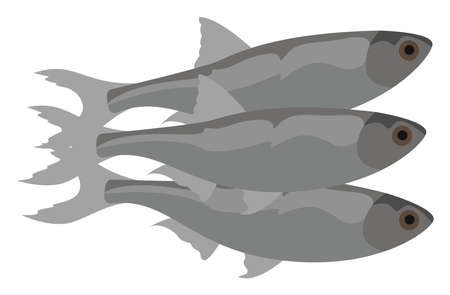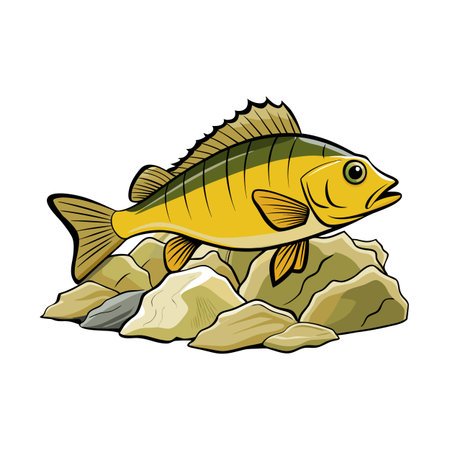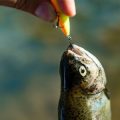Introduction to Stillwater Trout Fishing in the UK
Stillwater trout fishing holds a special place in the heart of the British angling community. Unlike river or stream fishing, stillwater refers to lakes, reservoirs, and ponds where trout are commonly stocked and managed for recreational fishing. This branch of angling is deeply rooted in British tradition, drawing enthusiasts from all walks of life who appreciate both the challenge and tranquillity it offers. The popularity of stillwater trout fishing continues to rise across the UK, with well-maintained fisheries providing accessible opportunities for beginners and seasoned anglers alike. Whether it’s the pursuit of trophy rainbow trout at a renowned water or a quiet afternoon casting on a local club lake, stillwater venues cater to a wide range of preferences and skill levels. The enduring appeal lies not just in the sport itself but in the sense of community, respect for nature, and time-honoured etiquette that underpin this cherished pastime.
2. Understanding Local and National Regulations
Before casting your line into any British stillwater, it’s essential to familiarise yourself with both national legislation and local byelaws. The UK has a well-established regulatory framework that balances angler access with the conservation of trout populations and aquatic environments.
Key National Laws for Stillwater Trout Fishing
The primary authority overseeing freshwater fishing in England is the Environment Agency (EA). All anglers aged 13 or over must possess a valid rod fishing licence when targeting trout in stillwaters. Failure to comply can result in hefty fines.
| Requirement | Details |
|---|---|
| Rod Licence | Required for all anglers (ages 13+) fishing for trout; available as annual, 8-day, or 1-day permits via the Environment Agency |
| Number of Rods | Maximum two rods per angler when fishing for trout on stillwaters |
| Species Covered | Brown trout, rainbow trout, and other salmonids |
Regional Byelaws and Close Seasons
In addition to national laws, regional byelaws may apply. For example, some regions enforce a close season (typically from October to March) to protect spawning wild brown trout, while others permit year-round fishing on stocked stillwaters. Always check with the local fishery or EA office before planning your trip.
| Region | Close Season Dates (Typical) | Notes |
|---|---|---|
| England & Wales (Rivers and Streams) | 15 March – 15 June | Mainly applies to flowing waters; most stocked stillwaters are exempt but check locally |
| Scotland | No statutory close season for stillwaters | Individual fisheries may set their own rules |
| Northern Ireland | Varies by waterbody and species | Consult Department of Agriculture, Environment and Rural Affairs (DAERA) |
Size and Bag Limits
Certain fisheries impose minimum size limits or daily bag limits to promote sustainable fishing. These restrictions help maintain healthy trout stocks and ensure fair access for all anglers.
| Example Restriction | Description |
|---|---|
| Minimum Size Limit | Typically 25–30cm for retained trout, but check individual fishery rules. |
| Bag Limit | Commonly 2–4 fish per day; catch & release often encouraged beyond this. |
| C&R Only Waters | Some venues require barbless hooks and prohibit the retention of fish entirely. |
The Importance of Compliance
The British angling community takes regulations seriously. Not only do these rules protect fish stocks and habitats, but they also uphold the tradition of fair play that is central to UK outdoor culture. Always review current EA guidance and fishery-specific rules before you go—ignorance is no excuse under British law. Respecting these regulations ensures that everyone can enjoy the sport now and in the future.

3. Securing the Right Licences and Permissions
If you’re planning a stillwater trout fishing trip in the UK, obtaining the correct licences and permissions is essential—not only to stay within the law, but also to ensure a hassle-free experience on the bank.
The Environment Agency Rod Licence: Your First Step
Every angler aged 13 or over must hold a valid Environment Agency (EA) rod licence when fishing for trout in England and Wales. This applies whether you’re fishing rivers, lakes, or reservoirs. You can easily purchase your rod licence online via the government website, at most Post Offices, or even over the phone. Choose from an annual licence if you fish regularly, or opt for a one-day or eight-day licence for occasional outings. Remember: fishing without a rod licence can result in hefty fines and confiscation of your equipment.
Day Tickets and Fishery Permits: Accessing Stillwaters
Most stillwater fisheries operate on a day ticket basis. These tickets grant permission to fish for a specific period—usually a day—and are available to purchase online, at the fishery lodge, or sometimes from local tackle shops. Prices and catch limits vary depending on the venue and whether you wish to take trout home (“catch and keep”) or release them (“catch and release”). If you intend to fish at club-controlled waters, joining as a member may be necessary; this often brings additional benefits such as reduced rates and exclusive access times.
Checking Site-Specific Rules
No two fisheries are exactly alike when it comes to rules. Before setting out, always check the venue’s regulations regarding bait types (for example, some sites are fly-only), hooks (barbless may be required), bag limits, and permitted fishing areas. Most fisheries display their rules at entrances or on their websites—take five minutes to read these carefully, as ignorance is rarely accepted as an excuse by bailiffs.
Practical Tips for Staying Informed
Carry digital or printed copies of all relevant documents—your EA licence, day ticket receipts, and any club permits—when you fish. Mobile connectivity isn’t always reliable by remote waters! If in doubt about permissions or site rules, ring ahead or ask staff upon arrival. This not only keeps you compliant but also demonstrates respect for both fellow anglers and fishery staff—a hallmark of British angling etiquette.
4. Essential Etiquette on the Bank
Respect for Fellow Anglers
Proper etiquette is a cornerstone of British angling culture. When you arrive at a stillwater fishery, always acknowledge fellow anglers with a polite greeting. Avoid crowding others—give each angler ample space, particularly when selecting your swim (fishing spot). It’s customary to ask if a spot is taken before setting up nearby, and never cast over another person’s line or into their swim.
Consideration for Landowners
Most UK stillwaters are either privately owned or managed by angling clubs. Always adhere to posted rules and respect property boundaries. Close gates behind you, park only in designated areas, and avoid causing damage to fences, banks, or vegetation. If you encounter the landowner or bailiff, be courteous and prepared to present your rod licence and any day tickets if requested.
Protection of Wildlife and the Environment
Responsible anglers play an active role in conservation. Refrain from leaving litter—carry all rubbish home, including discarded line and hooks which pose hazards to wildlife. Observe local restrictions regarding bait types and barbless hooks to protect fish stocks. If you see injured animals or pollution, report it immediately to the site manager or Environment Agency.
Swim Selection: Best Practices
Selecting your swim should be a thoughtful process that considers both your own enjoyment and that of others. The table below summarises key points:
| Do | Dont |
|---|---|
| Choose an available swim with adequate space from neighbours | Set up directly beside another angler without asking |
| Check with others before moving swims | Abandon your gear unattended in busy areas |
| Observe watercraft rules if boats are allowed | Paddle or wade through other anglers lines |
Noise Control and General Behaviour
Stillwater trout fishing is valued for its tranquillity. Keep noise to a minimum: silence mobile phones, avoid loud conversations, and refrain from playing music. Handle tackle quietly, especially early in the morning or late in the evening when sound carries further across water. By maintaining a calm atmosphere, you not only show respect for others but also improve your own chances of success.
The British Angler’s Code: Summary Checklist
- Acknowledge others upon arrival and departure
- Leave no trace—take all litter home
- Respect wildlife and observe catch-and-release policies where applicable
- Follow all posted rules specific to the fishery or club
- Maintain quiet surroundings for everyone’s benefit
By embracing these standards of etiquette, you ensure a welcoming environment for all while preserving the traditions that make stillwater trout fishing in Britain so special.
5. British Tackle and Methods: What’s Best for Stillwater Trout
When it comes to stillwater trout fishing in the UK, selecting the right tackle and employing effective methods can make all the difference between a rewarding day by the water and heading home empty-handed. Understanding both tradition and local fishery rules is key to success.
Typical UK Tackle Setups
British anglers usually favour a 9-10ft fly rod rated #6-#8 for stillwater trout, paired with a floating or intermediate line depending on season and conditions. Reels are often simple, with reliable drag systems, as big reservoirs can hold surprisingly powerful fish. Leaders of 8-12lb breaking strain fluorocarbon are common, offering the balance between invisibility and strength. For spinning, where permitted, light spinning rods around 7ft matched with fixed spool reels and 6-8lb line are typical.
Fly and Bait Choices
The UK’s stillwaters are synonymous with fly fishing, and fly choice reflects both local hatches and the preferences of stocked trout. Popular patterns include Buzzers (chironomid imitations), Diawl Bachs, Damsel Nymphs, and Cats Whiskers. During summer evenings, dry flies like CDC emergers or Hoppers can be deadly. Where bait fishing is allowed—often only in specific coarse lakes rather than fly-only trout waters—traditional options include sweetcorn, maggots, or even bread, but always check venue regulations first.
Locally Preferred Techniques
Technique varies by region and water type. On large reservoirs, loch style boat fishing is popular: drifting under wind power while casting ahead of the boat. On smaller lakes, bank fishing with slow retrieves using nymphs or lures is a staple approach. Many British anglers use indicator (bung) setups to suspend buzzers at precise depths or strip larger lures quickly to provoke aggressive takes from rainbows. Always remember that many UK fisheries enforce barbless hooks and catch-and-release policies—adapt your rigs accordingly.
Complying with Fishery Rules
Above all, every angler must tailor their tackle and methods to match individual fishery rules. Check signage on arrival for restrictions such as fly-only zones, permitted hook types, bag limits, or seasonal closures. Local knowledge is invaluable—chatting with bailiffs or fellow anglers will help you fine-tune your setup for both legality and effectiveness.
6. Responsible Catch, Release, and Handling
Best Practice for Handling Trout Safely
When fishing in British stillwaters, ensuring the safety and welfare of trout is paramount. Always wet your hands before touching a fish to protect its delicate slime coat, which guards against infections. Use barbless hooks where possible—they make unhooking easier and less stressful for the fish. Employ a soft, knotless landing net to minimise fin or scale damage. If you need to lift the trout, support its body with both hands—never hold it by the gills or squeeze tightly.
Catch and Release Expectations in British Fisheries
Many UK fisheries encourage or require catch and release, particularly on wild trout waters or during certain periods of the season. Always check local rules: some venues may stipulate that only certain sizes or numbers of fish can be retained, while others operate strictly on a catch-and-release basis. When releasing, keep the trout in the water as much as possible; if you must take a photo, do so quickly and return the fish promptly. Revive tired fish by gently holding them facing upstream until they swim away strongly.
Maintaining Fish Welfare: A Shared Responsibility
The angling community in Britain takes pride in upholding high standards of fish care. Practising responsible handling is not just about adhering to regulations—it’s about safeguarding fish stocks for future generations. Avoid fishing in extreme temperatures when trout are more vulnerable to stress. Dispose of lines, hooks, and litter responsibly to prevent harm to wildlife. By adopting these best practices, anglers contribute to healthy fisheries and reinforce a culture of respect for both the sport and the environment.
7. Useful Resources and Next Steps
Recommended Reading for British Stillwater Anglers
If you’re keen to expand your knowledge of stillwater trout fishing in the UK, there are several excellent books and guides worth exploring. Titles such as Trout Fishing in Stillwaters by John Bailey and The Trout and the Fly by Brian Clarke and John Goddard provide practical insights into techniques, equipment, and seasonal approaches specific to British waters. For an up-to-date perspective, consider subscribing to magazines like Trout & Salmon, which regularly covers regulations, new fisheries, and angling etiquette.
Top UK Clubs and Fisheries for Practical Experience
Joining a reputable angling club or visiting well-managed fisheries is one of the best ways to learn directly from experienced British anglers while enjoying a supportive environment. Notable clubs include the Salmon & Trout Conservation UK, which offers resources and events for members. For hands-on fishing, venues such as Rutland Water, Chew Valley Lake, and Grafham Water are celebrated for their facilities, stock management, and welcoming atmosphere for both novices and seasoned anglers. Many of these locations also run introductory courses on local rules, safety, and best practices.
Staying Informed: National Bodies and Regulation Updates
For the latest information on licences, regional byelaws, closed seasons, and catch limits, always refer to official sources before heading out. The primary organisations to bookmark are:
- Environment Agency (England)
- Natural Resources Wales
- Inland Fisheries Ireland
- Fishing in Scotland (FishPal)
Your Next Steps as a Responsible British Angler
Commit to continuous learning—regulations evolve, conservation priorities shift, and etiquette adapts with time. Stay connected with your local angling community through forums and social media groups; they’re invaluable for sharing real-time updates about water conditions or rule changes. Above all, approach every stillwater with respect for its rules, wildlife, and fellow anglers—this is the hallmark of a true British trout fisher.

